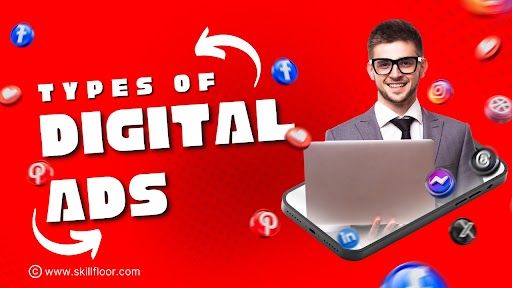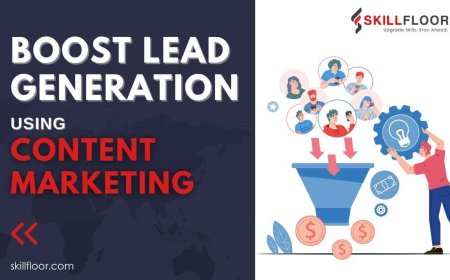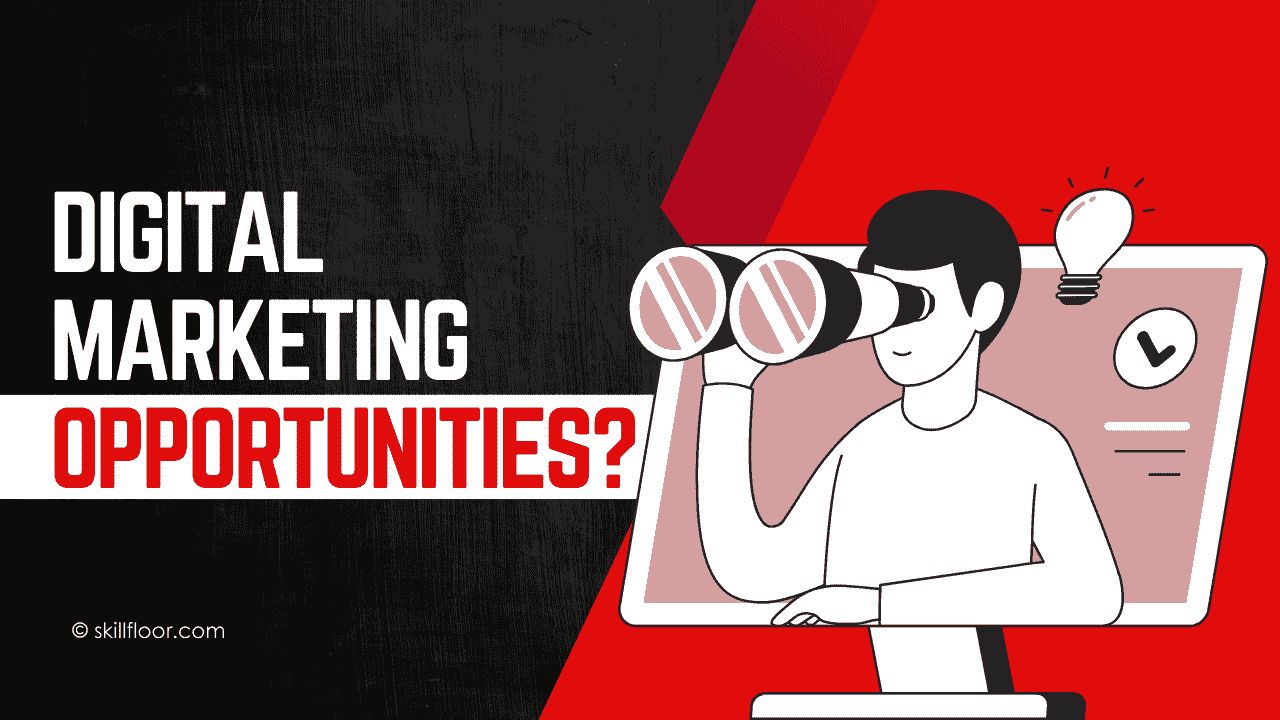Types of Digital Ads: A Beginner's Guide
Different types of digital ads, from display and search ads to social media and video ads, are in this beginner's guide to effective online advertising.

As someone who’s spent years working in digital marketing, I’ve seen how advertising has changed a lot. Today, digital ads are everywhere—from the websites you visit to the social media apps you use. I’m going to explain what digital advertising is, why it’s important, and the different types of digital ads you can use. I’ll also go over the various ways advertisers are charged for these ads, so you can understand how digital ads work behind the scenes.
What is Digital Advertising?
Let’s start with a simple definition. Digital advertising is promoting products, services, or brands using the internet. This can happen through many online platforms like search engines (Google), websites, social media (Facebook, Instagram), email, or even mobile apps. Unlike traditional advertising methods like TV or print, digital advertising allows businesses to target specific groups of people, track how well the ads are doing, and adjust them in real time if needed.
The Benefits of Digital Ads
Why do businesses spend so much money on digital ads? Because they come with a lot of advantages:
1. Target Specific People
One of the best things about digital ads is that you can show them to specific groups of people. For example, you can target teenagers who like video games or parents who live in a certain city. This makes sure that your ad reaches the right audience.
2. Cost-Effective
Digital ads can work with almost any budget. You can spend as much or as little as you want. For example, with a pricing model like Cost Per Click (CPC), you only pay when someone clicks on your ad, making it a smart way to control your spending.
3. Track Results
With digital ads, you don’t have to guess how well your ad is doing. You get data that shows how many people saw your ad, clicked on it, or made a purchase. This way, you can see what’s working and what’s not.
4. Make Quick Changes
If you notice an ad isn’t performing well, you can adjust it immediately. Maybe you want to change the image, or perhaps you need to target a different audience. With digital ads, you can make changes instantly.
5. More Engagement
Many digital ads allow people to interact with them by clicking, liking, or sharing. This engagement helps businesses understand what their audience is interested in and how to improve their ads.
6. Boost Brand Awareness
Even if people don’t click on your ad, they still see it. This increases brand awareness, which means people become more familiar with your business over time.
How Advertisers Are Charged
Now, let’s talk about how you pay for digital ads. There are different pricing models, which means businesses are charged in different ways depending on the goals of their ad campaigns.
1. Cost Per Click (CPC)
With CPC, you only pay when someone clicks on your ad. It’s great if your goal is to drive traffic to your website because you’re only paying for actual clicks.
2. Cost Per Mille (CPM)
CPM stands for Cost Per Thousand Impressions (mille means “thousand” in Latin). You pay every time your ad is shown 1,000 times, even if no one clicks on it. This is best for increasing brand awareness.
3. Cost Per Acquisition (CPA)
CPA charges you when a user completes a specific action, like buying a product or signing up for a newsletter. This model is good if you want to focus on generating leads or sales.
4. Cost Per Lead (CPL)
CPL is like CPA but focuses on generating leads. You pay when someone gives you their contact information, like filling out a form on your website.
5. Cost Per View (CPV)
CPV is mainly for video ads. You pay when someone watches your video ad, usually for a certain number of seconds.
6. Flat-Rate Pricing
This is a simple model where you pay a set price to run your ad for a specific time, regardless of how many clicks or views it gets.
7. Real-Time Bidding (RTB)
Real-time bidding is an auction system where advertisers compete to place their ads on websites or apps. The price you pay depends on how much competition there is for that ad space at the moment.
8. Cost Per Install (CPI)
This model is mainly used for mobile app ads. You pay when someone installs your app after clicking on your ad.
9. Viewable CPM (vCPM)
Similar to CPM, here you only pay for impressions that are viewable on the user’s screen. This makes sure your ad isn’t just shown but also seen.
Each pricing model is useful for different purposes, so the one you choose depends on what you want your ads to achieve—whether it’s clicks, views, leads, or conversions.

Types of Digital Ads
There are many types of digital ads, and each one works a little differently. Let’s go over some of the most common types.
1. Display Advertising
These are the banner ads you see on websites. They can be static images, animated GIFs, or even interactive ads that let you engage with the content. Display ads are good for increasing brand awareness.
2. Search Engine Marketing (SEM)
SEM is when ads show up in search engine results, like on Google. These are usually text ads that appear at the top of the page when someone searches for something related to your product or service. It’s great for businesses that want to reach people actively looking for something.
3. Social Media Advertising
Social media platforms like Facebook, Instagram, and Twitter offer several types of ads:
-
Sponsored Posts: These look like regular posts but are paid to reach more people.
-
Video Ads: Short video clips that show up in user feeds.
-
Carousel Ads: These let you show multiple images or videos in one ad.
-
Story Ads: Full-screen ads that appear between user stories on platforms like Instagram and Snapchat.
4. Video Advertising
Video ads are popular on platforms like YouTube and social media. They can appear before, during, or after a video that someone is watching. Video ads are great for storytelling and grabbing attention quickly.
5. Native Advertising
Native ads blend in with the content around them. For example, they may appear as a "recommended article" at the end of a blog post. These ads often don’t look like traditional ads, so people are more likely to engage with them.
6. Email Advertising
Email ads are sent directly to someone’s inbox. These could be promotional emails or ads included in newsletters. Email advertising is a great way to keep in touch with potential customers and promote new products or offers.
7. Affiliate Marketing
In affiliate marketing, businesses pay other people or websites (affiliates) to promote their products. The affiliate earns a commission for every sale or lead they generate.
Influencers are people with large followings on social media. Brands pay them to promote products. Influencer marketing works well when you want to reach specific audiences who trust the influencer’s recommendations.
9. Programmatic Advertising
Programmatic ads use automation and real-time bidding to buy and place ads. It’s a fast and efficient way to run large-scale campaigns across different websites and apps.
10. Retargeting Ads
Retargeting ads are shown to people who have already visited your website but didn’t take action, like making a purchase. These ads remind them to come back and complete their action.
11. Mobile Advertising
With more people using smartphones, mobile ads are now a big part of digital marketing. This includes in-app ads, mobile video ads, and ads designed specifically for mobile users.
12. Audio Advertising
Audio ads are played on music streaming services like Spotify or during podcasts. They can either be pre-recorded or read by the podcast host.
13. Interactive Ads
These ads are designed to engage users by allowing them to interact with the content, such as quizzes, polls, or mini-games. Shoppable ads, where you can buy products directly from the ad, are also becoming more popular.
Digital advertising has completely changed how businesses reach their audiences. With so many types of digital ads and pricing models available, it’s easier than ever to tailor your advertising to specific goals, whether you want to raise brand awareness, drive traffic to your website, or boost sales. The ability to target, track, and adjust campaigns in real time gives digital ads a significant advantage over traditional forms of advertising, making them a vital tool for businesses of all sizes.




























































